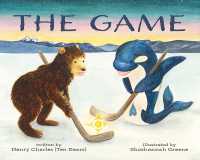- ホーム
- > 洋書
- > 英文書
- > Science / Mathematics
基本説明
An advanced-level textbook covering the field of community ecology: the study of the patterns and processes involving two or more species. Includes new material on modeling, which is often one of the hardest sections of community ecology courses for students to grasp. 1st ed.: 1991.
Full Description
All life on earth occurs in natural assemblages called communities. Community ecology is the study of patterns and processes involving these collections of two or more species. Communities are typically studied using a diversity of techniques, including observations of natural history, statistical descriptions of natural patterns, laboratory and field experiments, and mathematical modelling. Community patterns arise from a complex assortment of processes including competition, predation, mutualism, indirect effects, habitat selection, which result in the most complex biological entities on earth including iconic systems such as rain forests and coral reefs. This book introduces the reader to a balanced coverage of concepts and theories central to community ecology, using examples drawn from terrestrial, freshwater, and marine systems, and focusing on animal, plant, and microbial species. The historical development of key concepts is described using descriptions of classic studies, while examples of exciting new developments in recent studies are used to point toward future advances in our understanding of community organization.
Throughout, there is an emphasis on the crucial interplay between observations, experiments, and mathematical models. This second updated edition is a valuable resource for advanced undergraduates, graduate students, and established scientists who seek a broad overview of community ecology. The book has developed from a course in community ecology that has been taught by the author since 1983. Figures and tables can be downloaded for free from www.wiley.com/go/morin/communityecology
Contents
Preface. Preface to the First Edition. Part I: Communities: Basic Patterns and Elementary Processes. 1. Communities. 2. Competition: Mechanisms, Models, and Niches. 3. Competition: Experiments, Observations, and Null Models. 4. Predation and Communities. Empirical patterns. 5. Models of predation in simple communities. 6. Food Webs. 7. Mutualisms. 8.Indirect Effects. Part II: Factors Influencing Interactions Among Species. 9. Temporal Patterns: Seasonal Dynamics, Priority Effects, and Assembly Rules. 10. Habitat Selection. 11. Spatial Dynamics. Part III: Large-scale, Integrative Community Phenomena. 12. Causes and Consequences of Diversity. 13. Succession. 14. Applied Community Ecology. Appendix: Stability Analysis. Bibliography. Index.








